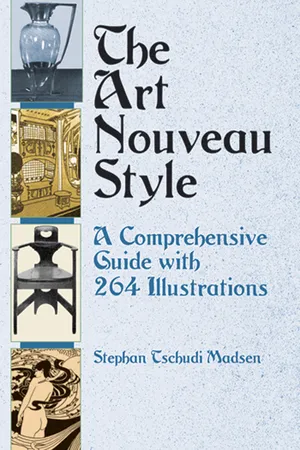
eBook - ePub
The Art Nouveau Style
A Comprehensive Guide with 264 Illustrations
- 496 pages
- English
- ePUB (mobile friendly)
- Available on iOS & Android
eBook - ePub
About this book
A revolutionary reaction to traditional nineteenth-century art, the turn-of-the-century Art Nouveau movement drew much of its inspiration from nature. Applying its sinuous, curvilinear motifs to the decorative arts, graphics, architecture, sculpture, and painting, artists and craftspeople attempted to create a style suitable for a "modern" age.
In this absorbing, exceptionally detailed, and well-researched book (one of the first scholarly works to revive interest in the style after World War II), a noted Norwegian authority on the subject examines the movement in depth. Stephan Madsen offers a wealth of facts and insights about the origins and development of the style; trends leading up to Art Nouveau, including the influence of Blake and the Pre-Raphaelites; early Art Nouveau posters and book illustrations; and its use in architectural ornamentation, furniture, jewelry, wrought-iron, glass, and other applied arts.
A magnificent selection of 264 photographs and line drawings accompanies the text, which gives broad coverage to the movement, as well as insightful discussions of such important artists as Emile Gallé, Alphonse Mucha, Walter Crane, Charles Rennie Mackintosh, Aubrey Beardsley, Henry Van de Velde, Victor Horta, William Morris, and Eugène Grasset.
Artists and students, admirers of Art Nouveau, and anyone interested in this enduring and influential style will welcome Professor Madsen's expert, fully documented study.
In this absorbing, exceptionally detailed, and well-researched book (one of the first scholarly works to revive interest in the style after World War II), a noted Norwegian authority on the subject examines the movement in depth. Stephan Madsen offers a wealth of facts and insights about the origins and development of the style; trends leading up to Art Nouveau, including the influence of Blake and the Pre-Raphaelites; early Art Nouveau posters and book illustrations; and its use in architectural ornamentation, furniture, jewelry, wrought-iron, glass, and other applied arts.
A magnificent selection of 264 photographs and line drawings accompanies the text, which gives broad coverage to the movement, as well as insightful discussions of such important artists as Emile Gallé, Alphonse Mucha, Walter Crane, Charles Rennie Mackintosh, Aubrey Beardsley, Henry Van de Velde, Victor Horta, William Morris, and Eugène Grasset.
Artists and students, admirers of Art Nouveau, and anyone interested in this enduring and influential style will welcome Professor Madsen's expert, fully documented study.
Frequently asked questions
Yes, you can cancel anytime from the Subscription tab in your account settings on the Perlego website. Your subscription will stay active until the end of your current billing period. Learn how to cancel your subscription.
No, books cannot be downloaded as external files, such as PDFs, for use outside of Perlego. However, you can download books within the Perlego app for offline reading on mobile or tablet. Learn more here.
Perlego offers two plans: Essential and Complete
- Essential is ideal for learners and professionals who enjoy exploring a wide range of subjects. Access the Essential Library with 800,000+ trusted titles and best-sellers across business, personal growth, and the humanities. Includes unlimited reading time and Standard Read Aloud voice.
- Complete: Perfect for advanced learners and researchers needing full, unrestricted access. Unlock 1.4M+ books across hundreds of subjects, including academic and specialized titles. The Complete Plan also includes advanced features like Premium Read Aloud and Research Assistant.
We are an online textbook subscription service, where you can get access to an entire online library for less than the price of a single book per month. With over 1 million books across 1000+ topics, we’ve got you covered! Learn more here.
Look out for the read-aloud symbol on your next book to see if you can listen to it. The read-aloud tool reads text aloud for you, highlighting the text as it is being read. You can pause it, speed it up and slow it down. Learn more here.
Yes! You can use the Perlego app on both iOS or Android devices to read anytime, anywhere — even offline. Perfect for commutes or when you’re on the go.
Please note we cannot support devices running on iOS 13 and Android 7 or earlier. Learn more about using the app.
Please note we cannot support devices running on iOS 13 and Android 7 or earlier. Learn more about using the app.
Yes, you can access The Art Nouveau Style by Stephan Tschudi Madsen in PDF and/or ePUB format, as well as other popular books in Design & Decorative Arts. We have over one million books available in our catalogue for you to explore.
Information
Part I
ART NOUVEAU FULLY DEVELOPED
National Aspects
FRANCE
Floral and Fashionable
French Art Nouveau had two centres, the Nancy school, with its founder Emile Gallé (1846-1904) and the artists who worked around him in King Stanislaus’ venerable university town; next there was the group of artists working for the cosmopolitan and energetic little Hamburger Sigfried Bing, in Paris—as well as a number of entirely independent artists also working in Paris.
For the Paris Exhibition of 1900 Gallé made a worktable of ash and walnut, with marquetry of various woods,1 representing his mature style (fig. 1). On the side of the vertical part of the table are a number of stalk motifs, as well as circles placed freely on the surface of the wood. An inscription, “Travail est Joie,” is also found in marquetry. Gallé’s speciality is inlay work, varying from plant motifs to verses by Baudelaire inset in the surface, and his decoration is invariably developed two-dimensionally, as can also be seen in the lowest vertical part of the table. The floral motifs flow and undulate rhythmically in a linear interplay between the legs; it is a decoration envisaged in one plane. The table as a whole is not a new type: both its construction and the design of the legs are traditional, while the rich moulding derives from the latter half of the nineteenth century.
Gallé’s use of inscriptions is typical of his literary attitude, and “Travail est Joie” might well stand as a motto for his varied achievements as well as his artistic attitude: the object is not to express function through the construction—as some of his contemporaries maintained—no, a piece of furniture should convey a Stimmung, and its aims should find expression through its decoration.
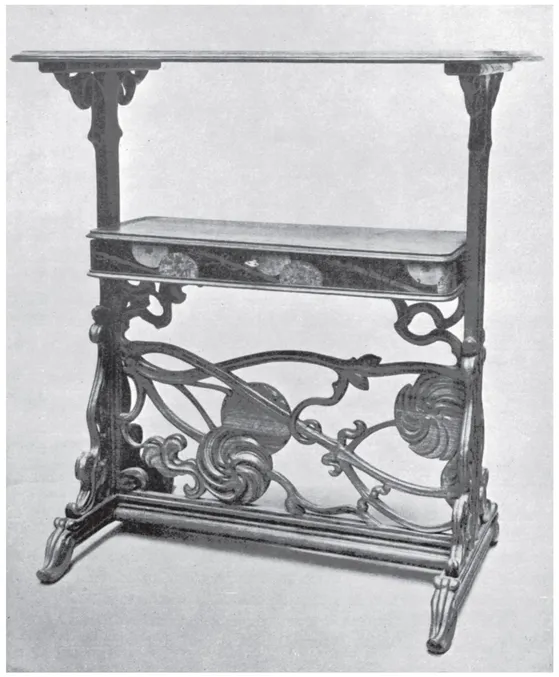
Fig. 1. Gallé: Work table of ash and walnut with marquetry in various woods. Inscription: Travail est Joie. 1900.
Victoria and Albert Museum. Crown Copyright reserved.
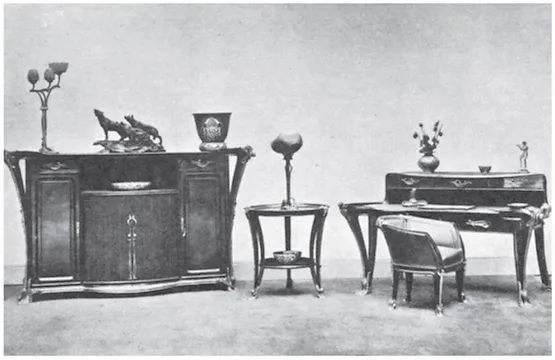
Fig. 2. Majorelle: Cabinet de Travail. «Nenuphars». Mahogany fitted with brass gilt. 1900.
Furthermore, the decoration should provide incitement and a moral—as in the case of the inscription above—giving symbolical expression to the idea of the furniture, or inducing an aesthetic experience beyond what is innate in the piece of furniture itself. “Pour bannir le symbole du decor, il faudrait chasser du firmament notre satellite.”2
The leading furniture-producer of the Nancy school was Louis Majorelle (1859-1926). In 1902 Majorelle designed a cabinet de travail entitled Nénuphars (fig. 2),3 from the name given to the sacred white Egyptian water-lily which is the basic motif of this piece of furniture. The suite is representative, not only of Majorelle, but also of the Nancy school: it is symmetrical and more or less traditional in construction, while all ornaments are asymmetrical. While the mahogany is polished smooth, with its mouldings and profiles, the gilt flowers and leaves are contrasted with the smooth surfaces of the wood. A special feature of this suite is the design of the corners, whose sole object is to be decorative. Together with the deep flutings in the legs and the lavish use of gold, the somewhat ponderously designed corners have a marked similarity with Louis XV. The central section of the sideboard also curves out slightly; the chair is the French fauteuil type adapted to the new style. The sides, which are gently curved, terminate in rounded corners with gilt water-lily motifs—leaves and flowers opening out to enfold the legs and corners of the chair.
In contrast to Gallé’s two-dimensional decoration Majorelle’s is far more plastic: while Gallé’s line is at times elegiac, Majorelle’s is frequently dynamic.
The Maison Huot, 92-93bis Quai Claude Lorrain, Nancy (fig. 3), designed by the leading architect of the Nancy school, Emile André (1871-1933), was completed in 1903. Taken as a whole, this house presents a medieval effect, with its tall roof and projecting cornices, as well as the Gothic pointed gables, but below the cornice the medieval or Gothic impression ends: here, the form-language of the Nancy school is clearly in evidence. The decoration, instead of being spread across the facade—of smooth and unornamented sandstone—is confined to the doors and windows. But to make up for this the element concerned has been given over entirely to ornamentation. The decoration is on the whole of a floral nature, being constructed of stalks, leaves, and single flowers—in the case of the door of fir twigs and cones—which twine round the apertures like a tendril. But the floral elements have also taken complete possession of the actual structure of windows and doors, and in the door the iron grille, the mullion, and the framework conform to the same stalk-like rhythm. The mullions are entirely original in shape, springing out from the central transom like growing branches, and giving the top part of the window a characteristic onion shape.
Other noteworthy features of the facade are the Moorish-type window and the small projections and decoratively-shaped depressions in the wall, which bear witness to a plastic conception of the surface, striving for a three-dimensional effect. There is not a single sharp angle in the whole facade, all corners being smoothed off. The house represents no special constructional ideas or any striving towards rationalism.
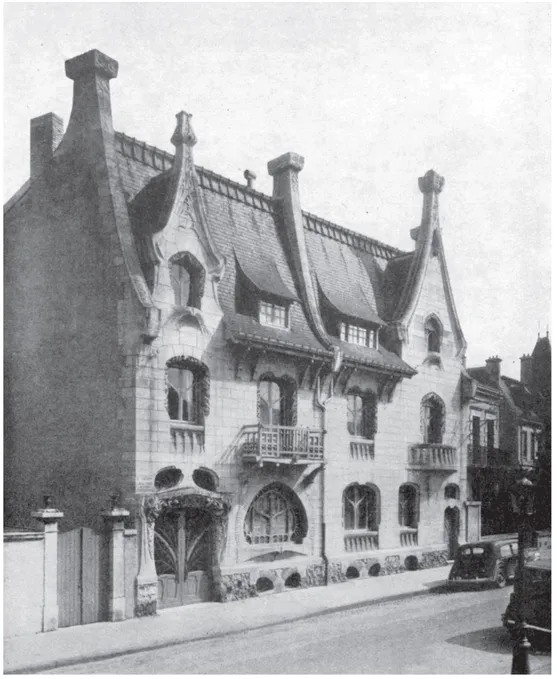
Fig. 3. E. André: Maison Huot, 92—93 bis, Quai Claude Lorrain, Nancy. 1902—1903.
Courtesy of Jacques André.
Even with such different artists as Gallé and Majorelle the Nancy school nevertheless shows certain peculiar features which distinguish it from all other types of Art Nouveau. The artistic attitude of the Nancy school is based entirely on Nature and exploits its motifs—especially flowers—without any special stylisation. The Nature-inspired decoration tends to spread over the entire object, literally enfolding it in its floral embrace. The Rococo predilection for asymmetry and for a vue d’ensemble are important factors in the decoration. A literary touch of a symbolical nature is especially noticeable, and this found expression in frequent use of inscriptions, and was referred to in the language of the furniture-designer as meuble parlant. The signing of pieces of furniture and inlay work are also special features of the Nancy school. In architecture the link with the French tradition is represented by a neo-Gothic manner bearing all the hallmarks of Art Nouveau.
The Parisian Art Nouveau is lighter and more austere than that of the Nancy school: the decoration is often confined to a single square, and though it takes its inspiration from Nature, it is more stylised and at times even abstract. In 1900 Eugène Gaillard designed a canapé executed in rosewood by Bing4 (fig. 4). This piece is remarkable for its simple faintly-curved lines and discreet decoration. With its narrow mouldings it has a light and airy, somewhat prim, appearance, with the decoration unerringly placed on the rounded corners and the arm-rests. The actual decor consists of freely-adapted leaves which wind their way gracefully out of the flutings, clinging in low relief to the actual shape of the canapé. The decoration is so discreet that the noble rosewood gives the essential decorative effect. The upholstery is pale blue and dove grey.
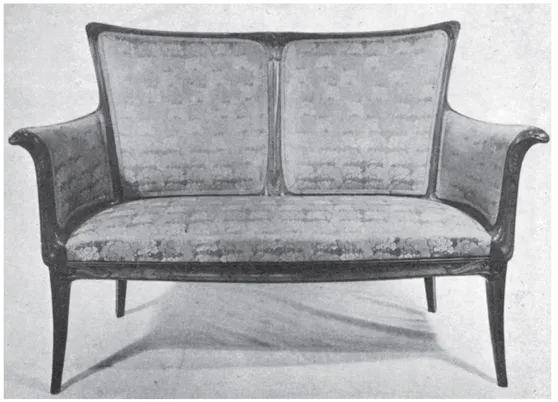
Fig. 4. Gaillard: Canapé of pallisander covered with light grey and blue silk. 1900.
Musée des Arts Décoratifs, Paris. Copyright reserved.
This exquisite piece from 1900 seems to embody some of the best features of French eighteenth century furniture-making, with its light and airy elegance. So perfect is the rhythm of all the separate elements and curves, and so subtly attuned, that any change—even of the tiniest curve—would seem to affect the whole piece and destroy its harmony.
Georges de Feure’s (1868-1928) canapé and chair from the same year, also executed by Bing5 (fig. 5), are constructed in the same way as Gaillard’s piece—viz. a divided backpiece, upholstered arm-rests, and a small seat. While all the lines in Gaillard’s piece were curved, we find here a contrast between the arched top section and the straight bottom part. All the woodwork is gilt, in conformity with the best traditions of the eighteenth- and nineteenth-century Rococo. The decoration consists of abstract p...
Table of contents
- Title Page
- Copyright Page
- Dedication
- Table of Contents
- PREFACE
- INTRODUCTION
- Part I - ART NOUVEAU FULLY DEVELOPED
- Part II - ORIGINS
- Part III - DEVELOPMENT
- Part IV - SOURCES
- ACKNOWLEDGEMENTS
- INDEX